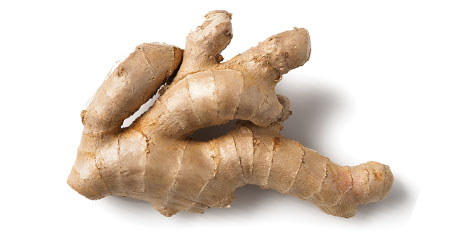What Is Dried Ginger?
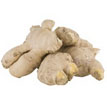
Dried ginger spice is produced from the mature rhizome. As the rhizome matures the flavour and aroma become much stronger. Dried ginger is exported, usually in large pieces which are then ground into a spice in the country where it is used. Dried ginger can be ground and used directly as a spice and also for the extraction of ginger oil and ginger oleoresin.
Dried Ginger Plant and Cultivation
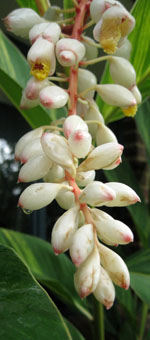
Ginger grows best in warm and humid climate. It is mainly cultivated in the tropics from sea level to an altitude of 1500m, both under rain fed and irrigated conditions. For successful cultivation of the crop, a moderate rainfall at the sowing time till the rhizomes sprout, fairly heavy and well-distributed showers during the growing period, and dry weather with a temperature of 280 to 350C for about a month before harvesting are necessary.
The best time for planting ginger in West Coast of India is during the first fortnight of May with the receipt of pre monsoon showers, while in North Eastern states, it is during April. Under irrigated conditions, it can be planted well in advance during the middle of February or early March.
Ginger is always propagated by portions of the rhizomes, known as seed rhizomes. Carefully preserved seed rhizomes are cut into small pieces of 2.5 – 5.0 cm length weighing 20-25 g, each having one or two good buds. The seed rate varies from 1500 to 1800 kg per ha from region to region. The seed rhizomes are treated with 0.3 % Dithane M 45 for 30 min, drained and planted at a spacing of 20-25 cm along the rows and 20-25 cm between the rows.
Dried Ginger Description
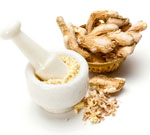
Ginger refers to the underground bulb belonging to the plant. Its flesh can be white, yellow or even red and is covered by a thick brownish skin. It has been used for centuries as a condiment in many Asian cultures, imparting a tangy and pungent taste to food. The mature root is dried and powdered and used in traditional medicine to treat a variety of ailments. Studies have shown that dried ginger possesses many therapeutic properties. It has a potent antioxidant effect as well as an anti-inflammatory effect.
Uses of Dried Ginger
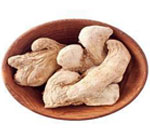
Dried Ginger is a spice that is enjoyed in many areas of the world. It has been used for more than 5,000 years and is one of the essential plants in Ayurvedic medicine. In herbal medicine, Dried Ginger is recommended for a large number of problems, whether to aid with digestion, lack of energy, vitality or to combat various infections. It is also reputed to be effective in eliminating nausea and vomiting. Recently, Ginger root has been the subject of various studies, notably in relation to its possible anti-cancer properties.
10 Health Benefits of Dried Ginger
1 - Popular Digestive Aid - Dried Ginger is frequently recommended to treat dyspepsia (chronic indigestion), and help in the treatment of bacteria-induced diarrhea.
2 - Therapy for nausea - Dried Ginger is very good at subsiding various types of nausea and vomiting, including morning sickness, motion sickness, and even nausea in chemotherapy patients
3 - Powerful anti-inflammatory - Dried Ginger contains a very potent anti-inflammatory compound called gingerol, which is the substance responsible for alleviating joint and muscle pain.
4 - Provides Pain Relief - Research has shown that dried ginger can provide pain relief from migraine headaches.
5 - Anti-tumor properties - Dried Ginger has been proven to effectively treat breast cancer, prostate cancer and colon cancer. Modern research has recently been looking to dried ginger as a potential remedy for various types of cancer, and has come up with some promising results.
6 - Anti-diabetic compounds - Dried Ginger works on diabetes by increasing insulin release and sensitivity, inhibiting enzymes in carbohydrate metabolism, and improving lipid profiles. Dried Ginger also has a very low glycemic index (GI), which means it breaks down slowly to form glucose, and therefore does not trigger a spike in blood sugar levels like high GI foods do.
7 - Heals the heart - High in potassium, manganese, chromium, magnesium and zinc, and famous for its anti-inflammatory properties, dried ginger has been used for years to treat heart conditions.
8 - Relieves respiratory disorders - Dried Ginger compounds have shown positive results in treating respiratory disorders. Dried Ginger has its potent antioxidant, anti-inflammatory and analgesic compounds, which have properties similar to that of non-steroidal anti-inflammatory drugs, but without the negative side effects.
9 - Immunity-booster - Dried Ginger is a wonderful immune system booster, making it a well-known treatment for colds and flus. And since it helps calm symptoms of upper respiratory tract infection, it also works on coughs, sore throats and bronchitis.
10 - Slows down DNA damage - Many worldwide studies have found dried ginger to contain potent antioxidant properties, which help protect lipids from peroxidation (rancidity) and DNA damage.
Producing Countries of Dried Ginger
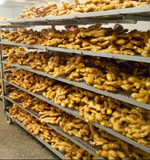
India remains the largest producer, consumer and exporter of this spice, with China close behind, followed by other Asian countries, including Nepal, Japan and Thailand.
The Caribbean islands are also known for their ginger production, especially Jamaica, where the quality of ginger is similar to that of the Indian plant.
South American countries such as Brazil, and African nations like Nigeria and Sierra Leone also cultivate the herb, along with Australia and Fiji, where it is grown on a smaller scale.
Indian ginger is produced in the states of Orissa, Kerala, Karnataka, Arunachal Pradesh, West Bengal, Sikkim and Madhya Pradesh. Kerala is the largest ginger producing state, accounting for about 33 per cent of the total production in India.
Consuming Countries of Dried Ginger

Dried Ginger was first exported from Asia in the first century AD along the lucrative Spice Route. Japan is the number one importer of dry ginger. Other major importing countries are United States, United Kingdom, Saudi Arabia, Singapore, Malaysia, Korea, Netherlands, Canada, Germany, and France. Both the Netherlands and Singapore serve as importing countries and re-export to neighboring countries, and other world countries.
Recipe for Beverages with Dried Ginger
Lemon Dried Ginger Iced Green Tea
Ingredients:
A: 2 cups water
B: 1 cup (or to taste) low-calorie sweetener
C: 1 teaspoon ground dried ginger
D: 1 1/2 teaspoons grated lemon peel
E: 4 teaspoons fresh lemon juice
F: 6 green tea bags
A: Add water, low-calorie sweetener, ground dried ginger, and lemon peel to medium saucepan and bring to boil over medium heat. Reduce heat to where it sustains a gentle boil and cook for about 7-8 minutes. Remove from heat and add the green tea bags. Steep this tea mixture for 10 minutes, stirring or dunking the bags often. B: Remove tea bags and stir lemon juice into the tea liquid. Cover and refrigerator for up to 1 to 2 weeks. C: To make a cup of iced tea, pour 1/4 cup of the concentrated tea mixture into a tall glass and stir in 3/4 cup of sparkling or seltzer water or club soda. Add ice cubes and enjoy!
Recipe for Cooking with Dried Ginger
Tofu with Peanut-Dried Ginger Sauce
Ingredients: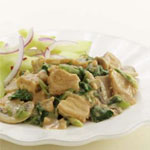
SAUCE A: 5 tablespoons water B: 4 tablespoons smooth natural peanut butter C: 1 tablespoon rice vinegar, (see Ingredient note) or white vinegar D: 2 teaspoons reduced-sodium soy sauce E: 2 teaspoons honey F: 2 teaspoons minced dried ginger G: 2 cloves garlic, minced TOFU & VEGETABLES A: 14 ounces extra-firm tofu, preferably water-packed B: 2 teaspoons extra-virgin olive oil C: 4 cups baby spinach, (6 ounces) D: 1 1/2 cups sliced mushrooms, (4 ounces) E: 4 scallions, sliced (1 cup)
Preparation MethodA: To prepare sauce: Whisk water, peanut butter, rice vinegar (or white vinegar), soy sauce, honey, dried ginger and garlic in a small bowl. B: To prepare tofu: Drain and rinse tofu; pat dry. Slice the block crosswise into eight 1/2-inch-thick slabs. Coarsely crumble each slice into smaller, uneven pieces. C: Heat oil in a large nonstick skillet over high heat. Add tofu and cook in a single layer, without stirring, until the pieces begin to turn golden brown on the bottom, about 5 minutes. Then gently stir and continue cooking, stirring occasionally, until all sides are golden brown, 5 to 7 minutes more. D: Add spinach, mushrooms, scallions and the peanut sauce and cook, stirring, until the vegetables are just cooked, 1 to 2 minutes more.
Recipe for Dessert with Dried Ginger
Eggless Coconut Cookies
Ingredients:
A: 1 cup whole wheat flour/atta, 120 grams B: ¼ cup desiccated coconut C: ¼ tsp baking soda or baking powder D: 4 tbsp coconut oil, you can also use 3 tbsp E: 1 tbsp fine sooji/cream of wheat F: ½ tsp cardamom powder or 4 to 5 green cardamoms, crushed in mortar-pestle G: ¼ tsp dried ginger powder/saunth H: ½ cup organic powdered or grated jaggery/gur, 85 grams I: 2 to 3 tbsp water or coconut milk, add as required
Preparation MethodA: first take 1 cup whole wheat flour, 120 grams and ¼ tsp baking soda in a mixing bowl. B: with a spoon or spatula mix very well. also preheat your oven to 180 degrees celsius/356 degrees fahrenheit. C: add 4 tbsp coconut oil. you can also add 3 tbsp coconut oil. D: lightly mix the oil with the flour. instead of coconut oil, you can also use 4 tbsp butter or ghee. E: then add 1 tbsp fine sooji, ½ tsp cardamom powder and ¼ tsp dried ginger powder. F: add ½ cup powdered or grated jaggery, 85 grams. G: mix everything well with your fingertips. Add 2 to 3 tbsp water. add the water in parts and start mixing with the dough. depending on the type of flour, you may add less or even more water. H: just mix together with your hands and gather to a dough. don't knead. lightly mix and form into a dough ball. I: pinch small to medium sized balls from the dough and place on a greased tray. Press one cashew half or almond on each cookie and slightly flatten them while pressing the cashews. J: bake in the preheated oven at 180 degrees C/356 degrees fahrenheit for 20-25 mins till the tops become light golden. Since oven temperatures vary, it may takes less or more time.

